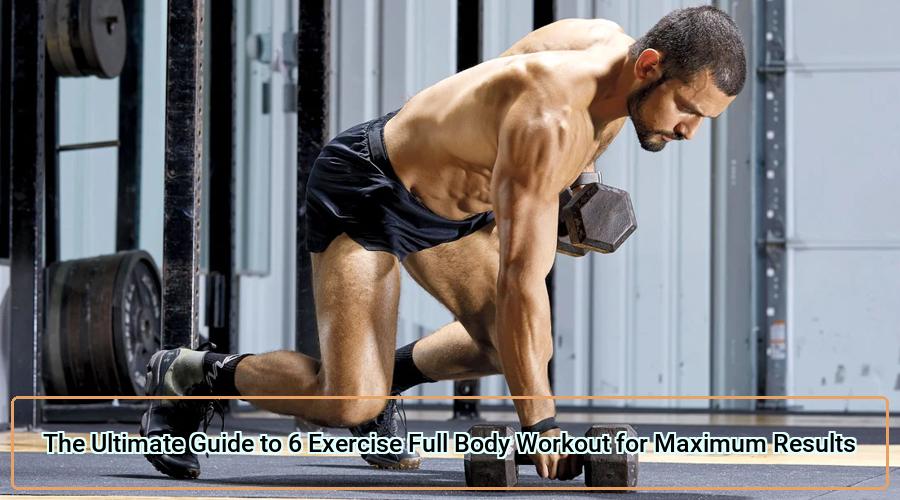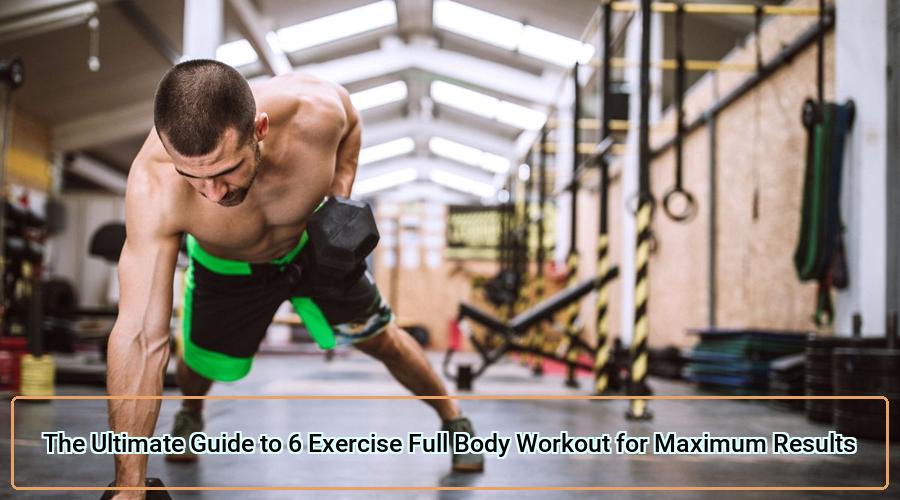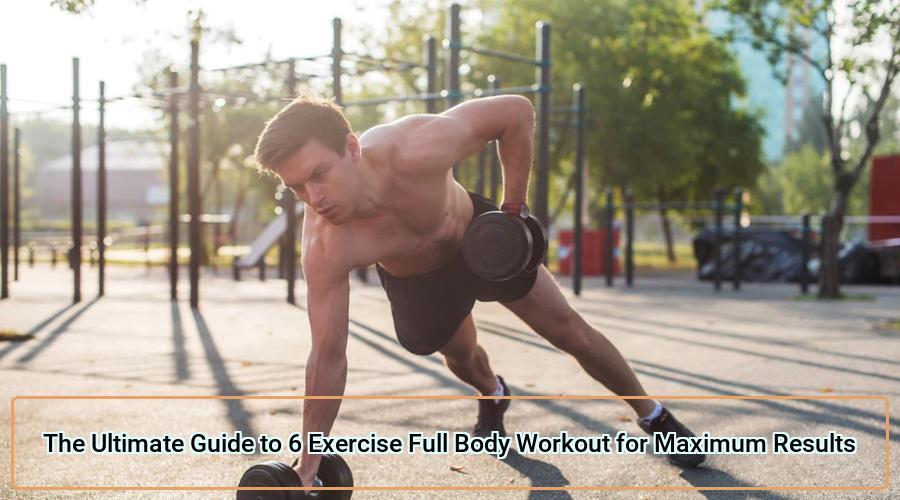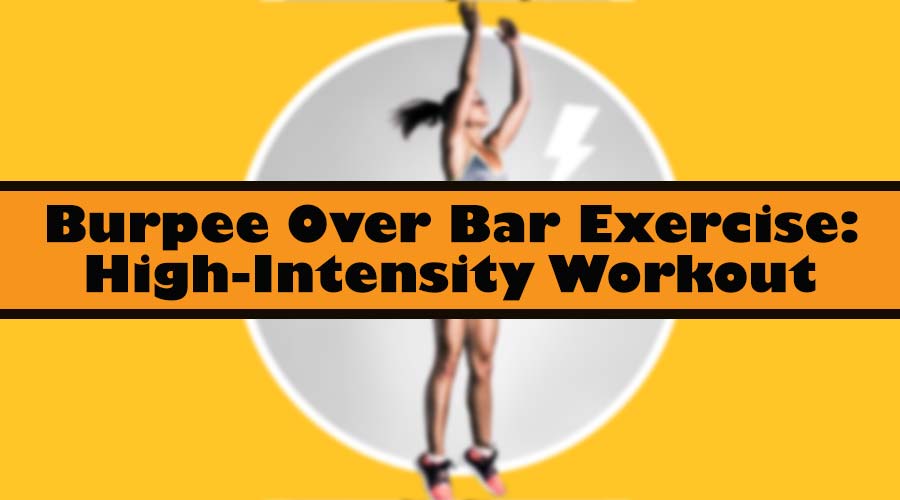
Are you tired of spending hours at the gym trying to achieve your desired fitness goals, but not seeing the results you want? Look no further than the 6 exercise full body workout! This workout routine is designed to work all of your major muscle groups in just six simple exercises, giving you maximum results in minimum time.
In this ultimate guide, we’ll break down the six exercises that make up this full body workout, explaining the benefits of each and how to perform them correctly. From squats and lunges to push-ups and planks, we’ll show you how to target every muscle group in your body for a complete, well-rounded workout. Whether you’re a fitness newbie or a seasoned gym-goer, this guide will help you get the most out of your workout and achieve your fitness goals faster than ever before. So, are you ready to take your fitness to the next level with the 6 exercise full body workout? Let’s get started!
Why the 6 Exercise Full Body Workout is the Ultimate Solution for Busy People
If you lead a busy lifestyle, it can be difficult to find time for regular exercise. Between work, family obligations, and other commitments, fitting in a full workout can feel like an impossible task. That’s where the 6 exercise full body workout comes in.
This workout routine is designed to target all of your major muscle groups in just six simple exercises, making it the ultimate solution for busy people who want to stay fit and healthy. By working your entire body in one session, you’ll save time and get the maximum benefit from your workout. Plus, the simplicity of the routine makes it easy to remember and perform, no matter where you are or how much time you have. So if you’re struggling to make time for exercise, the 6 exercise full body workout may be just what you need to stay on track and achieve your fitness goals.
Read more about Trenbolone Enanthate for Sale
How to Properly Warm Up Before Starting Your Full Body Workout
Warming up before exercise is essential for preventing injury and getting the most out of your workout. A proper warm-up routine prepares your muscles and joints for physical activity, increasing blood flow and improving flexibility. Here are some tips on how to properly warm up before starting your full body workout:
- Start with cardio: A few minutes of light cardio, such as jogging in place or jumping jacks, will get your heart rate up and help warm up your body.
- Stretch: Dynamic stretching, such as leg swings and arm circles, is a great way to loosen up your muscles and improve range of motion.
- Focus on problem areas: If you have any tight or sore muscles, spend extra time stretching and massaging those areas to help prevent injury.
- Gradually increase intensity: As you continue to warm up, gradually increase the intensity of your exercises to prepare your body for the upcoming workout.
- Incorporate sport-specific movements: If you’re planning on doing a particular type of exercise, such as squats or lunges, incorporate similar movements into your warm-up routine to help your body get used to the motion.
By taking the time to properly warm up before your full body workout, you’ll reduce your risk of injury and be able to perform at your best.

The Benefits of Squats for Your Full Body Workout
Squats are one of the most popular exercises for a good reason – they offer a multitude of benefits for your full body workout. Here are some of the top benefits of squats:
- Build muscle: Squats are a compound exercise that work multiple muscle groups, including your glutes, hamstrings, quads, and core. By targeting these major muscle groups, squats help build overall strength and muscle mass.
- Improve balance and stability: Squats require balance and stability, which means they help strengthen your core and improve overall balance.
- Burn calories: Squats are a high-intensity exercise that burn a lot of calories, making them a great addition to any weight loss or fat-burning workout.
- Boost mobility: Squats require a wide range of motion, which can help improve hip and ankle mobility over time.
- Increase athletic performance: Squats help improve explosive power, which can benefit athletes who need quick bursts of energy for activities like running or jumping.
Whether you’re looking to build muscle, burn fat, or improve your athletic performance, squats are a versatile exercise that can help you reach your fitness goals. Incorporate them into your full body workout for maximum results.
Lunges: The Ultimate Lower Body Exercise for Maximum Results
When it comes to lower body exercises, lunges are often considered the ultimate exercise for maximum results. Here are some of the top benefits of lunges:
- Build strength: Lunges target multiple muscle groups in your legs, including your quads, hamstrings, and glutes. By working these muscles, lunges help build overall strength and endurance.
- Improve balance and stability: Lunges require balance and stability, which means they help strengthen your core and improve overall balance.
- Increase flexibility: Lunges require a wide range of motion, which can help improve hip flexibility and range of motion over time.
- Correct imbalances: If you have any muscle imbalances in your legs, lunges can help correct them by isolating each leg and working them individually.
- Burn calories: Lunges are a high-intensity exercise that burn a lot of calories, making them a great addition to any weight loss or fat-burning workout.
Whether you’re looking to build strength, improve balance, or burn calories, lunges are a versatile exercise that can help you reach your fitness goals. Incorporate them into your lower body workout for maximum results.

Push-ups: Strengthen Your Upper Body and Core with this Classic Exercise
Push-ups are a classic exercise that have stood the test of time for good reason – they offer a multitude of benefits for your upper body and core. Here are some of the top benefits of push-ups:
- Build upper body strength: Push-ups target multiple muscle groups in your chest, shoulders, triceps, and back, making them a great way to build upper body strength and muscle mass.
- Strengthen your core: Push-ups require stability and balance, which means they help strengthen your core muscles.
- Improve posture: Push-ups can help improve posture by strengthening the muscles in your back and shoulders, which can help counteract the effects of sitting at a desk all day.
- Burn calories: Push-ups are a high-intensity exercise that burn a lot of calories, making them a great addition to any weight loss or fat-burning workout.
- Increase endurance: Push-ups can help increase your overall endurance by challenging your muscles to work harder over time.
Whether you’re looking to build upper body strength, improve your posture, or burn calories, push-ups are a versatile exercise that can help you reach your fitness goals. Incorporate them into your full body workout for maximum results.
How to Perform a Proper Plank: Tips and Tricks for Maximum Effectiveness
Planks are a great exercise for building core strength and stability, but proper form is crucial to ensure maximum effectiveness and prevent injury. Here are some tips and tricks for performing a proper plank:
- Start on your forearms: Begin by getting into a push-up position, but instead of lowering yourself to the ground, rest on your forearms.
- Keep your body straight: Your body should form a straight line from your head to your heels. Be careful not to let your hips drop or stick your butt up in the air.
- Engage your core: To get the most out of your plank, engage your core muscles by pulling your belly button towards your spine.
- Hold for 30 seconds to start: If you’re new to planks, start by holding the position for 30 seconds and gradually work your way up to longer holds.
- Breathe deeply: It’s important to breathe deeply and evenly while holding the plank position to avoid tensing up or holding your breath.
- Mix it up: Once you’ve mastered the basic plank, try adding variations such as side planks or plank jacks to challenge your muscles and prevent boredom.
By following these tips and tricks, you’ll be able to perform a proper plank with maximum effectiveness and minimal risk of injury. Add planks to your full body workout routine for a strong, stable core.

The Importance of Rest and Recovery for a Successful Full Body Workout
While exercise is important for staying fit and healthy, rest and recovery are equally important for a successful full body workout. Here are some of the top reasons why rest and recovery are crucial for your fitness routine:
- Prevent injury: Rest and recovery give your muscles time to repair and recover after a workout, reducing your risk of injury.
- Improve performance: When your muscles are fatigued and overworked, your performance can suffer. By taking time to rest and recover, you’ll be able to perform better during your next workout.
- Build muscle: Your muscles grow and get stronger during rest and recovery periods, so it’s important to give them the time they need to repair and rebuild.
- Reduce stress: Exercise can be a great way to relieve stress, but overtraining can actually increase stress levels. Rest and recovery can help balance the physical and emotional stressors of exercise.
- Improve sleep: Rest and recovery are essential for good sleep, which is crucial for overall health and fitness.
Whether you take a day off from exercise, practice active recovery with stretching or yoga, or simply prioritize getting enough sleep, rest and recovery are an essential part of a successful full body workout routine. Don’t overlook their importance in your fitness journey.
Read more about Trenbolone Enanthate Side Effects
The 6 Exercise Full Body Workout: An Ideal Routine for Home or Gym
The 6 exercise full body workout is an ideal routine for anyone looking to build strength and improve fitness. One of the best things about this workout is that it can be done at home or in the gym, making it accessible and convenient for anyone. Here are the six exercises that make up the full body workout:
- Squats: This classic exercise works your quads, hamstrings, and glutes, making it a great way to build lower body strength.
- Lunges: Another lower body exercise, lunges target your quads, hamstrings, and glutes, while also improving balance and stability.
- Push-ups: Push-ups are a great way to work your chest, shoulders, triceps, and core, making them a versatile exercise for upper body strength.
- Planks: Planks are a fantastic way to build core strength and stability, helping to improve posture and balance.
- Dumbbell rows: Using dumbbells, this exercise works your upper back and biceps, helping to build overall upper body strength.
- Dumbbell curls: This bicep curl exercise targets your biceps, helping to build arm strength and muscle mass.
By incorporating these six exercises into your workout routine, you’ll be able to work all of your major muscle groups for a complete, well-rounded workout. Whether you prefer to workout at home or in the gym, this full body workout is an ideal routine for anyone looking to build strength and improve their overall fitness.
